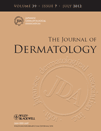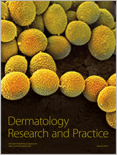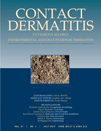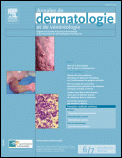
Actas Dermo-Sifiliograficas
Scope & Guideline
Advancing Dermatological Insights for a Healthier Tomorrow
Introduction
Aims and Scopes
- Clinical Dermatology Research:
The journal emphasizes clinical studies that provide insights into the management and treatment of various skin conditions, focusing on real-world applications and patient outcomes. - Innovative Therapeutic Approaches:
It highlights research on new treatment modalities, including biologics and novel pharmacological agents for chronic skin diseases, particularly psoriasis and atopic dermatitis. - Epidemiological Studies:
The journal publishes studies that assess the prevalence and impact of skin diseases in specific populations, contributing to a better understanding of dermatological health trends. - Dermatopathology:
Research related to the histopathological diagnosis of skin diseases is a key area, providing insights into the correlation between clinical presentations and underlying histopathological features. - Patient Quality of Life and Psychosocial Impact:
The journal includes studies that investigate how skin diseases affect patients' quality of life, emphasizing the psychosocial aspects of dermatological conditions. - Education and Training in Dermatology:
It addresses the education and professional development of dermatologists, including surveys on training experiences and recommendations for improving dermatological education.
Trending and Emerging
- Biologic Therapies and Personalized Medicine:
A significant increase in studies focusing on biologic therapies for chronic skin conditions, particularly psoriasis and atopic dermatitis, reflects a trend towards personalized and targeted treatment approaches. - Teledermatology and Digital Health:
The rise of teledermatology, especially during and post-COVID-19, indicates a growing interest in remote consultations and digital health technologies in dermatology. - Impact of COVID-19 on Dermatology:
There is an emerging focus on the effects of the COVID-19 pandemic on dermatological practices, patient care, and skin conditions, showcasing the need for adaptive strategies in dermatological health. - Psychodermatology:
An increasing number of studies are exploring the intersection of dermatology and psychology, emphasizing the importance of mental health in the management of skin diseases. - Epidemiological Insights into Skin Conditions:
The journal is publishing more research on the epidemiology of skin diseases, helping to inform public health strategies and resource allocation.
Declining or Waning
- Traditional Surgical Techniques:
There is a noticeable decline in the publication of papers focused on traditional surgical techniques for skin lesions, as newer methods and technologies gain prominence. - Basic Science Research:
Research that delves into the basic science of dermatology, such as molecular biology in skin conditions, has seen a decrease, possibly due to a shift towards more clinically applicable research. - Historical Perspectives in Dermatology:
Fewer papers are being published that explore historical aspects of dermatology, suggesting a waning interest in the historical context of skin diseases and treatments.
Similar Journals

Current Dermatology Reports
Illuminating the latest trends in skin health and research.Current Dermatology Reports is a distinguished journal published by SPRINGER that focuses on the latest advancements and research in the field of dermatology. With an ISSN of 2162-4933, this journal provides a vital platform for clinicians, researchers, and students to disseminate groundbreaking findings and emerging trends pertinent to skin health. Notably recognized within the Q2 category in Dermatology for 2023, it ranks 50th out of 142 journals in the Scopus database, placing it in the 65th percentile among its peers. This accessible journal, which has been converging scholarly contributions since its establishment in 2012, plays a crucial role in bridging the gap between clinical practice and research, thereby enhancing patient care and advancing scientific understanding of skin-related issues. The editorial team is committed to the rigorous peer-review process, ensuring high-quality publications that reflect the evolving landscape of dermatology. Researchers and healthcare professionals are invited to contribute and engage with content that pushes the boundaries of knowledge in this dynamic discipline.

ANAIS BRASILEIROS DE DERMATOLOGIA
Unveiling the Latest in Dermatology for a Healthier Tomorrow.ANAIS BRASILEIROS DE DERMATOLOGIA is a prestigious academic journal published by Elsevier Science Inc, specializing in the dynamic field of dermatology. With its Open Access model established in 2002, this journal ensures wide dissemination of research findings and facilitates collaboration within the dermatological community. Hailing from Brazil, it provides a platform for innovative research from both local and international contributors, spanning from its inception in 1963 to the current year, 2024. The journal positions itself as a vital resource in the dermatology sphere, currently ranked in the Q3 category for dermatology and holding a notable rank of 71 out of 142 in the Scopus rankings, placing it in the 50th percentile for its field. With a commitment to advancing knowledge and practice in dermatology, ANAIS BRASILEIROS DE DERMATOLOGIA is an essential read for researchers, professionals, and students eager to explore contemporary advancements and clinical practices.

JOURNAL OF DERMATOLOGY
Advancing skin health through groundbreaking research.The Journal of Dermatology, published by Wiley, is a premier academic journal dedicated to advancing the field of dermatology, with its esteemed reputation reflected in its Q1 ranking in Dermatology and a remarkable Q2 ranking in Miscellaneous Medicine as of 2023. Since its inception in 1974, the journal has become a vital resource for researchers, clinicians, and students alike, covering pioneering studies and cutting-edge advancements in skin health and disease. With a Scopus rank of #32 out of 142 in the Dermatology category, placing it in the 77th percentile, the journal underscores its commitment to fostering knowledge and innovation within the dermatological community. Although the journal operates under a subscription model, it remains an essential platform for disseminating impactful research that shapes clinical practice and enhances patient care. For anyone invested in dermatological sciences, Journal of Dermatology serves as a key publication where critical insights and developments are regularly showcased.

Turkderm-Turkish Archives of Dermatology and Venerology
Unlocking Insights in Skin Health and DiseaseTurkderm - Turkish Archives of Dermatology and Venerology, published by GALENOS PUBL HOUSE, serves as a vital platform for the dissemination of innovative research and advancements in the fields of dermatology and venerology. With an Open Access policy implemented since 2002, this journal aims to provide free and unrestricted access to significant findings, ensuring that vital information reaches a global audience. Based in Turkey, the journal has positioned itself as an important resource for professionals, researchers, and students alike, despite currently being categorized in Q4 of both Dermatology and Infectious Diseases as per the 2023 metrics. Although it faces competition in the rankings, with a Scopus standing of #131 in Dermatology and #331 in Infectious Diseases, its dedication to advancing knowledge in these critical health areas is unwavering. The journal continually invites original research, reviews, and case studies that enhance clinical practices and foster understanding in the dermatological community.

AMERICAN JOURNAL OF CLINICAL DERMATOLOGY
Elevating Dermatological Research to New HeightsThe American Journal of Clinical Dermatology, published by Adis International Ltd, is a leading peer-reviewed journal dedicated to advancing the field of dermatology. With a notable impact factor and a prestigious Q1 rank in both Dermatology and Miscellaneous Medicine categories, this journal stands out as a valuable resource for researchers and clinicians alike, offering cutting-edge insights into clinical practice and innovative treatment strategies. Its comprehensive scope encompasses a broad range of topics within dermatology, addressing both common and rare conditions, with a focus on emerging therapies and technologies. As it converges its publication years from 2000 to 2024, the journal remains an essential platform for disseminating high-quality research to professionals striving to improve patient care and outcomes. With the ISSN 1175-0561 and E-ISSN 1179-1888, the American Journal of Clinical Dermatology facilitates greater accessibility to pivotal findings within the field, making it an indispensable resource for anyone involved in dermatological research and practice.

Dermatopathology
Advancing knowledge in skin pathology.Dermatopathology is a pioneering open-access journal dedicated to the field of skin pathology, published by MDPI in Basel, Switzerland. Since its inception in 2014, the journal has provided a vital platform for the dissemination of cutting-edge research, advancements, and clinical studies that aid in the understanding of dermatological diseases at the microscopic level. With its commitment to accessibility and wide-ranging contributions from international researchers, Dermatopathology serves as an essential resource for dermatologists, pathologists, and academics alike. The journal strives to foster innovative collaborations and enhance knowledge within the multidisciplinary sphere of dermatology and pathology, ensuring timely access to valuable information that can influence clinical practices and improve patient outcomes. Researchers are encouraged to submit their original articles, case reports, and reviews, contributing to the growing body of knowledge essential for advancing the field.

JOURNAL DER DEUTSCHEN DERMATOLOGISCHEN GESELLSCHAFT
Unveiling innovative treatments in skin health.JOURNAL DER DEUTSCHEN DERMATOLOGISCHEN GESELLSCHAFT, published by Wiley, is a prominent periodical in the field of dermatology, recognized by its Q2 quartile ranking in the 2023 dermatology category. With a dedicated focus on advancing knowledge in dermatological science, the journal publishes rigorous peer-reviewed research that encompasses a range of topics including clinical studies, research methodologies, and innovative treatment practices in dermatology. Its impact is reflected in its Scopus ranking, where it stands at #48 out of 142 in the medicine dermatology category, placing it in the top 66th percentile. Although not an Open Access journal, it serves as a critical resource for researchers, clinicians, and students alike, facilitating the dissemination of high-quality research findings and fostering a deeper understanding of dermatological conditions and treatments. With years of convergence from 2003 to 2024, this journal remains a vital platform for scholarly dialogue and discovery in dermatology.

Dermatology Research and Practice
Connecting researchers and practitioners for skin health advancement.Dermatology Research and Practice is a premier open access journal published by HINDAWI LTD, dedicated to advancing the field of dermatology since its establishment in 2009. With a respectable impact factor and a ranking of #42 out of 142 in the Scopus Medicine - Dermatology category, the journal stands in the 70th percentile, reflecting its influence and relevance in contemporary dermatological research. Based in Egypt, it provides a platform for groundbreaking studies that shape clinical practice and policy worldwide. The journal covers a wide range of topics within dermatology, including but not limited to clinical research, epidemiology, and patient care, making it an essential resource for researchers, healthcare professionals, and students seeking to enhance their understanding and contribute to the field. Emphasizing open access, Dermatology Research and Practice ensures that vital research findings are readily available to the global community, fostering collaboration and innovation in dermatology.

CONTACT DERMATITIS
Advancing the Science of Skin HealthCONTACT DERMATITIS, published by WILEY, is a leading international journal focused on the vital field of dermatology, particularly examining the diagnosis, treatment, and management of contact dermatitis and related skin conditions. With origins dating back to 1975 and a planned convergence period extending to 2024, this esteemed journal serves as a crucial resource for researchers, clinicians, and healthcare professionals dedicated to advancing knowledge in dermatological practices. In the latest rankings, it has achieved a commendable Q2 classification in Dermatology and Q3 classification in Immunology and Allergy for 2023, underscoring its significance within these dynamic fields. Moreover, it holds a notable ranking of #29/142 in Medicine & Dermatology and #130/233 in Medicine & Immunology and Allergy according to Scopus metrics, placing it in the top tier of scholarly publications. While the journal operates on a subscription basis, its comprehensive reviews, original articles, and insightful research findings are invaluable for pushing the boundaries of current dermatological and immunological knowledge. By fostering a deeper understanding of the complexities of skin reactions and their implications, CONTACT DERMATITIS plays a vital role in connecting research with clinical practice, making it an essential read for anyone engaged in the field.

ANNALES DE DERMATOLOGIE ET DE VENEREOLOGIE
Exploring New Horizons in Dermatology and VenereologyANNALES DE DERMATOLOGIE ET DE VENEREOLOGIE is a distinguished journal that serves as a vital platform for disseminating innovative research and insightful reviews in the field of dermatology and venereology. Published by MASSON EDITEUR, this journal has been a cornerstone for professionals and researchers since its inception in 1977, offering a wealth of knowledge that spans decades. With its ISSN 0151-9638 and E-ISSN 2214-5451, it is indexed within leading databases, ensuring that the published work reaches a broad audience. The journal currently holds a Q3 ranking in the dermatology category, reflecting its commitment to quality and rigorous peer-review processes. While the journal is not open access, it provides an extensive archive of valuable studies that contribute to advancements in skin health and treatment methodologies. Located in Issy-les-Moulineaux, France, ANNALES DE DERMATOLOGIE ET DE VENEREOLOGIE continues to attract submissions from esteemed professionals, enhancing its reputation as a crucial resource for those dedicated to the ongoing development of dermatological sciences.